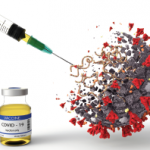ACR CONVERGENCE 2020—At the ACR’s fully virtual annual meeting on Saturday, Nov. 7, Anthony S. Fauci, MD, director of the National Institute of Allergy and Infectious Diseases (NIAID) since 1984, delivered a special lecture on COVID-19, from virology to therapy to vaccine development.
Novel Coronavirus, Familiar Vectors
When Chinese physicians first reported infections by what appeared to be a novel coronavirus in December 2019, infectious disease experts drew on decades of experience with coronaviruses, including those that cause severe acute respiratory syndrome (SARS), Middle East respiratory syndrome (MERS) and many common colds, said Dr. Fauci.1
“Here we are now with a global pandemic of historic proportions the likes of which we have not seen in the last 102 years. We are now currently close to 50 million cases worldwide. In the United States, we have been hit the hardest of any other country,” he said. As of the first week of November, more than 230,000 deaths from COVID-19 were reported in the U.S., according to the Centers for Disease Control and Prevention (CDC).
Dr. Fauci compared seven-day rolling averages of new infection rates from Jan. 1 to Nov. 4 in the U.S., with a weekly average of 86,300 cases, and the European Union (EU), with a weekly average of 190,700 cases.2 In the U.S., most new infections seen in March and April were in the Northeast, particularly metropolitan New York City, “but we never came back down to a low baseline even as New York cases sharply came down, because other areas of our large country began to have more cases,” he said. “Unfortunately, on Nov. 4, we hit 100,000 cases in a single day. The European Union is doing rather poorly also, with a resurgence of cases mostly related to the cooler weather, which is driving people indoors.”
Virology & Transmission
SARS-CoV-2 is a beta coronavirus in the same subgenus as SARS-CoV-1, which caused SARS, and other bat coronaviruses, said Dr. Fauci.3
“It’s an RNA virus and has a rather large genome and multi-structural proteins, the most important of which is the S protein, or spike protein, giving the virus the appearance of a corona or crown. When you look at it under electron microscopy, the receptor-binding domain of the spike binds to the ACE-2 cellular receptor, which is distributed widely in the upper and lower airways,” as well as the gastrointestinal tract, and neurological and cardiovascular systems of the body, he said.




